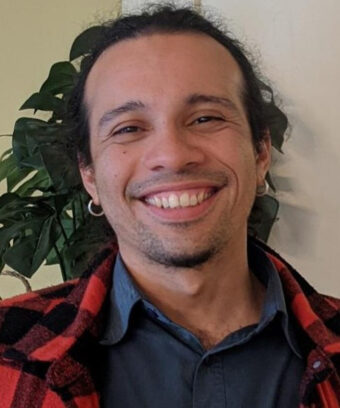What Central America’s Past Conflicts over Hydropower Say About the Future of Decarbonization
Renewable energy is being deployed at scale as part of global efforts to address climate change by replacing fossil fuels. But just as in past cases of fossil fuel extraction, large-scale renewable projects can also spark conflict. Since the 1970s, the impacts of hydro projects have catalyzed citizen protest, state repression, and violence between pro-dam and anti-dam coalitions.
What determines whether clean energy projects drive political and civil conflict? The case of hydropower in Central America provides some important clues that can help policymakers and civil society better understand and address potential conflicts over renewables.
Compared to recent large-scale projects for wind and solar power, there is a much longer historical record for hydropower. Inspired by megaprojects in the United States and Soviet Union, building large dams became a post-World War II symbol of development. Hydroelectric projects were being financed across the world by international financial institutions to provide cheap electricity in developing nations.
Political and economic elites across the Global South embraced these projects to promote industrialization while showcasing the sovereign power of their nations. Central America produces little oil but is rich in tropical watersheds. The region was an ideal setting for hydropower—in the post-war period, its countries pursued state-led development mostly under authoritarian regimes which competed with their neighbors for prestige. From 1948-1960, most of the region’s hydropower potential was identified, although few dams were completed.
The 1973 global energy oil crisis initiated a global surge of hydroelectric dams, propelling a second wave of construction in Central America. The megaprojects of this era brought distressing environmental consequences such as damaged ecosystems, increased flooding, and waterborne diseases. There were dramatic social consequences as well, including the dispossession of Indigenous lands, the destruction of cultural heritage, and violations of community consent to local projects. These problems motivated protests which elicited repressive responses from governments and sometimes expanded into larger sociopolitical conflicts.
Amid political and economic crisis, Central American regimes clamped down on civil society. Their development model had shifted in the 1970s to export-oriented industries financed by international capital. Large dam projects were needed to power this industrialization, and were constructed rapidly.
Some projects, like Chixoy-Pueblo Viejo in Guatemala and Cerrón Grande in El Salvador, are linked to extreme instances of state terrorism. These megaprojects were implemented in sacrifice areas zones that would later transform into hot spots of armed civil conflict. Indigenous communities like the Mayan Achí in Guatemala were subject to state violence in the name of hydropower development in the 1980s, most notably during the massacres of Río Negro in 1980-1983.
Since the 1980s, transnational social movements have developed to oppose large-scale hydroelectric projects. Despite this, these projects became attractive again during the global commodity boom of 2003, which increased the cost of oil-based energy. During these years, Central America experienced democratic transitions, aggressive pro-market economic reforms, and the consolidation of a Central American electricity market.
Electricity from dams was now sold on this cross-border market, incentivizing a third wave of projects in the early 2000s. Due to formidable opposition enabled by the strengthening of civil society and opposition parties, several of these projects were canceled, delayed, or substantially modified, notably El Tigre dam in the shared watershed between El Salvador and Honduras.
In later years, the appeal of dams grew even stronger amid the worsening effects of climate change. The consolidation of funding mechanisms such as carbon off-set markets coincided with increased interest from international financial institutions to invest in decarbonization. A fourth wave of construction started in the 2010s just as weak states in Central America experienced severe democratic backsliding while market liberalization, deregulation, and privatization continued.
The conflicts stemming from these megaprojects reflect the increased organizational capabilities of anti-dam activists, the aggressive territorial expansion of the pro-hydropower coalitions, and a turn towards autocracy in the region. The Agua Zarca project in Honduras, started after the country’s 2009 coup, ignited a fierce struggle from Indigenous communities and environmentalists. International pressure mounted for the government to abandon the project. It was canceled only after the assassination of internationally renowned environmentalist Berta Cáceres.
Central America is not the only region where hydropower projects are associated with force. Heated conflicts related to the Kaptai dam in Bangladesh in the 1970s and multiple projects in the Indian state of Assam more recently have also slipped into social and political violence.
However, hydropower projects do not always lead to conflict—what matters are the conditions in which they are implemented. Locals do not always oppose projects, and sometimes bargain for the benefits from the projects to be better distributed to their communities. In Central America, some Indigenous and peasant organizations are pushing for small, community-owned dams to supply their energy needs.
The connection between dams and conflict leaves important lessons for the future of renewable energy projects. This history underscores the importance of informed consent from affected communities. For state agencies, it highlights the need for environmental and social impact studies as a bridge for community engagement. For international financial organizations, past conflicts demonstrate the need for extensive social and environmental oversight of projects. Finally, for concerned citizens, the challenge of sustainability should be understood not only as a technical or economic problem, but also a political one.
A clean energy future must be a democratic one. Implementing clean energy projects without input from affected communities constitutes a major obstacle for a just energy transition.
Luis Rubén González Márquez is an IGCC dissertation fellow and a Ph.D. candidate in sociology at the University of California, Merced.
Thumbnail credit: Wikipedia

Global Policy At A Glance
Global Policy At A Glance is IGCC’s blog, which brings research from our network of scholars to engaged audiences outside of academia.
Read More